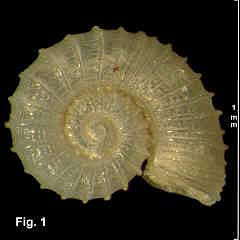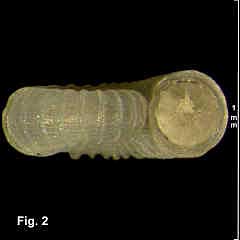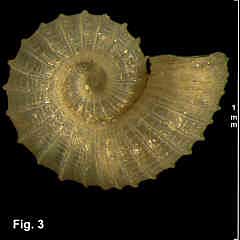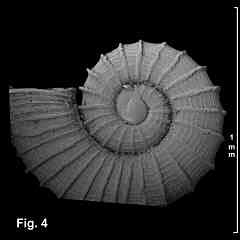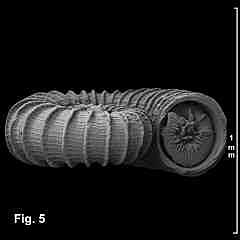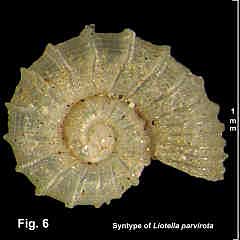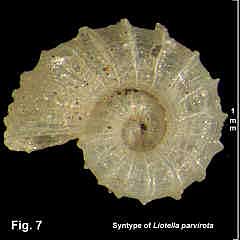|
|
|
|
|
Liotella kilcundae (Galliff & Gabriel, 1914) Description: Shell minute, spire usually below plane of last whorl, occasionally slightly above. Protoconch smooth, low. Teleoconch up to 1½ rounded whorls, suture deep. Axial sculpture of narrow, tall ribs, extending from suture into umbilicus, 17-28 on last whorl, becoming crowded towards aperture in large shells. Interspaces between axials about 4 times rib width, with fine spiral threads. Umbilicus open, wide. Aperture circular, margin entire, not thickened or with normal rib. Shell colourless transparent when fresh, becoming opaque with age. Size: Up to 1.0 mm in width. Distribution: Endemic to Australia; Port Stephens, NSW, southwards to Shoreham, Victoria. Habitat: Most specimens are from beach washup, a few down to 45 m. Moderately common. Comparison: This species is similar to L. pulcherrima and L. annulata but can usually be distinguished by its sunken spire and almost planar shape. The number of axial ribs - 17-28 in this species - is more than in L. annulata and less than in L. pulcherrima. Synonymy: Liotella parvirota Laseron, 1954 (Figs. 6, 7) is a synonym (NEW SYNONYM), the 12 syntypes being typical of this species. Remarks: In this species the axial ribs become crowded towards the aperture of mature shells, a character not seen in other members of the genus (Figs. 4, 6). Figs. 1, 2, 3: Port Stephens, NSW (C.216074) Figs. 4,5: Port Stephens, NSW (C.216074) (Photo Sue Lindsay, Australian Museum) Figs. 6, 7: Syntype of Liotella parvirota. Bayview, Pittwater, NSW (C.102811)
|
